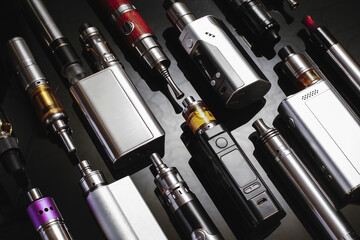VAPER Study
What is the VAPER Study?
The Vaping and Patterns of E-Cigarette Use Research (VAPER) Study collects detailed information about the most commonly used devices and liquids by American adults who use e-cigarettes, along with related use behaviors and use of other tobacco products. The study is part of the VCU Tobacco Centers of Regulatory Science (TCORS) grant funded by the U.S. Food and Drug Administration (FDA) and the National Institute on Drug Abuse (NIDA) (2U54DA036105- 06).

Recent studies show that 4.5 percent of American adults report using e-cigarettes every day or some days. The VAPER Study sought to develop and implement a methodology that allows for a better understanding of e-cigarette use behaviors and the impacts of potential e-cigarette policies in this population.
The data from this longitudinal cohort study can surface trends that may indicate benefits or unintended consequences of current or potential regulations. The study also provides information to inform the development of future regulations.
Why is this work important?
To make sure regulations maximize public health benefits while minimizing unintended consequences, the US Food and Drug Administration Center for Tobacco Products needs more detailed data from American adults who use e-cigarettes.
A number of factors have made this difficult in the past, including the variety of e-cigarette devices and liquids on the market, the customizability of the devices and liquids, and the lack of standardized reporting requirements. To the best of our knowledge, the VAPER Study was the first national study to collect in-depth data on e-cigarette devices and liquids and adult e-cigarette use behaviors. The study was conducted via a secure online survey with rigorous data quality assurance procedures.
How did the study work?
In addition to answering a series of questions, participants in this study submitted photos of their devices and liquids. As a result, these data offer a detailed examination of people’s device features and specifications, liquid characteristics, and key behaviors, which can provide more insights into the benefits and unintended consequences of potential regulations.
Furthermore, this study tested multiple recruitment strategies and conducted methodology experiments, leading to a cost-efficient recruitment strategy and adequate data integrity protections.
